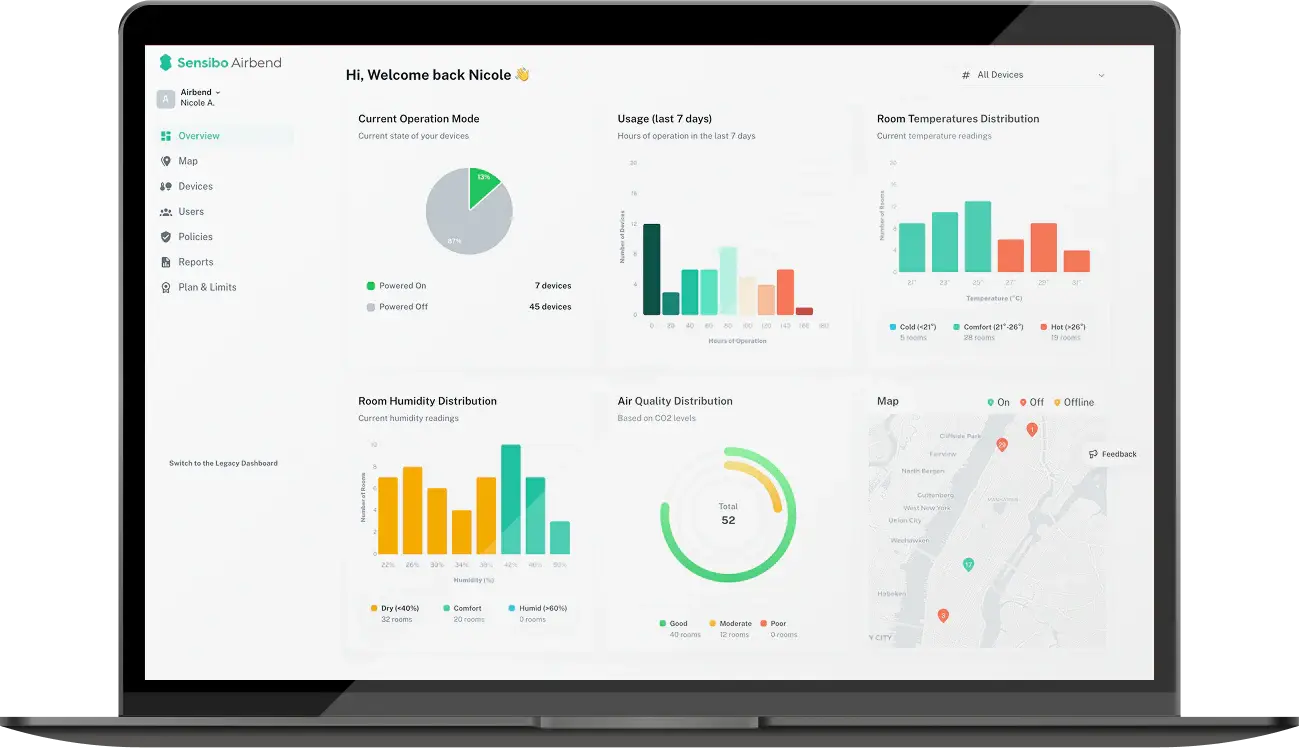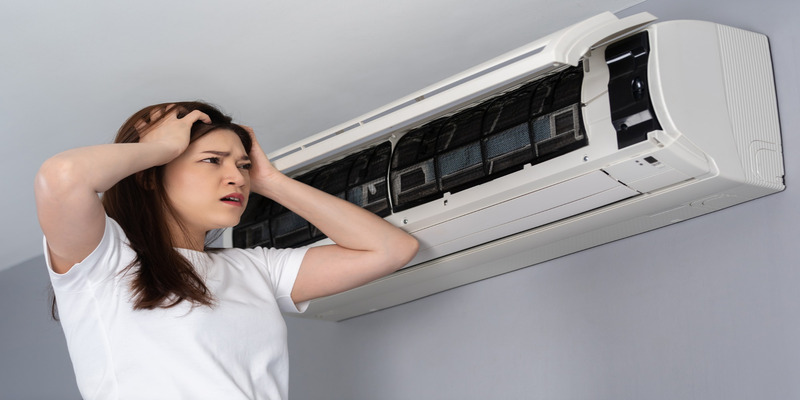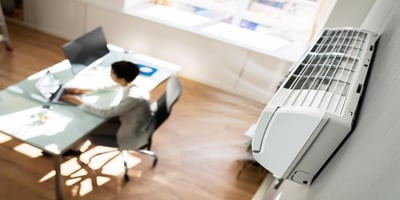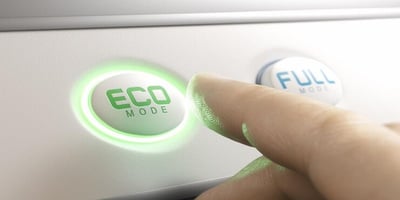Top Reasons Why Your Air Conditioner Won't Turn On & How to Fix Them
When your air conditioner isn't turning on, few household problems cause more immediate discomfort, especially during scorching summer days. The sudden silence where cool air should be flowing creates both discomfort and concern about potential repair costs.
For many homeowners, the moment their home AC is not turning on triggers panic, but often the solution is simpler than expected. Quick diagnosis can save you from sweating through uncomfortable days and expensive emergency service calls.
This guide walks you through the most common reasons your AC might refuse to start and provides practical solutions, from simple DIY fixes to knowing when it's time to call in the experts.
Before You Panic: Quick Checks Anyone Can Do
Before assuming the worst when your air conditioner isn't turning on, perform these quick checks that often resolve the issue without professional help:
Power Supply Check: Verify your AC unit is receiving power. Check if it's properly plugged in and look at your electrical panel for tripped circuit breakers. AC units require significant power, so a tripped breaker is a common culprit when your home AC is not turning on.
Thermostat Settings: Ensure your thermostat is set to "Cool" mode and the temperature setting is below the current room temperature. Sometimes the solution is as simple as incorrect settings when your air conditioner is not turning on.
System Reset: Turn off your AC at both the thermostat and the circuit breaker. Wait 30 seconds, then restore power to the circuit breaker first, followed by the thermostat. This simple reset often resolves electronic glitches, causing your unit to stay off.
For Sensibo users, check the app to see if your device is connected and responding. The app might indicate specific issues preventing normal operation.
Common Electrical Issues
Tripped Circuit Breakers & Blown Fuses
When your air conditioner isn't turning on, electrical issues frequently top the list of culprits. Air conditioners draw significant power, especially during startup, which can trip circuit breakers.
To check your breaker box:
- Locate your electrical panel
- Look for a switch that's not aligned with others or in the middle position
- Reset it by pushing it fully to the OFF position, then back to ON
If your breaker trips immediately after resetting, stop attempting to restart your AC. This indicates a short circuit or serious electrical problem requiring professional attention.
Sensibo's power consumption monitoring can alert you to unusual power draws before they cause breaker trips, potentially preventing situations where your AC fan is not turning on due to electrical issues.
Faulty Capacitors
Capacitors work like batteries that provide the extra boost needed to start your AC's compressor and fan motors. When they fail, your air conditioner isn't turning on despite having power.
Signs of capacitor failure include:
- Humming sound from the outdoor unit without the fan spinning
- AC shuts off unexpectedly or won't stay running
- Difficulty starting up, with the AC fan not turning on properly
Testing capacitors requires technical knowledge and a multimeter. If you're comfortable with electrical components, you can check the capacitor's rating (printed on its side) against its actual output. However, most homeowners should leave capacitor replacement to professionals due to electrical shock risks.
Replacement capacitors typically cost $10-50 for the part, but professional installation adds labor costs.
Thermostat Control Problems
 Incorrect Thermostat Settings
Incorrect Thermostat Settings
Surprisingly often, the reason your home AC is not turning on comes down to incorrect thermostat settings. Check these common issues:
Temperature Setting: Ensure the set temperature is at least 5 degrees below the current room temperature to trigger cooling.
Mode Selection: Verify your thermostat is set to "COOL" rather than "HEAT," "FAN," or "OFF."
Fan Setting: Check if the fan is set to "AUTO" rather than "ON." The "ON" setting runs just the fan without cooling.
Programming Issues: If using scheduled programming, ensure the current time and day on the thermostat are correct.
Sensibo controllers eliminate many of these problems with intuitive interfaces and app-based controls that clearly display current settings. The simple visual confirmation can quickly explain why your AC is not turning on.
Airflow Maintenance Issues
Clogged Air Filters
Dirty air filters rank among the top reasons why your split AC isn't turning on or working efficiently. When filters become clogged, they restrict airflow, which can:
- Cause the system to overheat and shut down
- Trigger safety switches that prevent operation
- Force the system to work harder, leading to component failure
To check and replace your filter:
- Locate the filter housing (typically in the return air duct or the indoor air handler)
- Remove the existing filter
- Check if light passes through - if not, it needs replacement
- Install a new filter with the arrows pointing toward the unit
Most residential systems need filter replacement every 1-3 months, depending on dust conditions, pets, and allergies. This simple maintenance step prevents many situations where your air conditioner isn't turning on.
 Frozen Evaporator Coils
Frozen Evaporator Coils
Why is my AC not running? If your AC fan is working but not cooling, frozen evaporator coils might be the cause. This common problem occurs when your AC runs but doesn't cool. This issue results from:
- Restricted airflow (often from dirty filters)
- Low refrigerant levels
- Operating in very cool temperatures
To identify frozen coils:
- Remove the access panel to the indoor unit
- Look for ice buildup on the coils
- Check for water underneath the unit from melting ice
If you discover ice, turn off the cooling function but keep the fan running to melt the ice. Never chip at the ice as this can damage delicate coils. After the ice melts completely (which may take 24 hours), you can try restarting the system.
Sensibo temperature sensors can detect abnormal cooling patterns, often alerting you to freezing conditions before they completely shut down your system.
Refrigerant System Issues
Low Refrigerant Levels
Refrigerant is essential for your AC's cooling process. If levels drop due to leaks, your system may protect itself by refusing to start. Signs of refrigerant issues when your air conditioner isn't turning on include:
- Warm air from vents when the system runs
- Hissing sounds near the indoor or outdoor unit
- Ice formation on refrigerant lines
- The system starts briefly, then shuts off
Refrigerant handling requires professional certification as it's environmentally regulated. A qualified technician will:
- Detect leaks using specialized equipment
- Repair leaks in the system
- Recharge the system with the correct amount of refrigerant
This is never a DIY fix due to environmental regulations and specialized equipment requirements.

Compressor Problems
The compressor is your AC's heart, and when it fails, your AC fan is not turning on properly, or the system won't cool. Compressor issues are serious and typically require professional diagnosis.
Warning signs include:
- Unusual noises (grinding, squealing) from the outdoor unit
- Circuit breaker trips when the compressor attempts to start
- System blows warm air or doesn't start at all
Compressor replacement is expensive, often costing $1,000-2,000 or more. In older units, compressor failure might justify replacing the entire system rather than just the component.
Sensibo Device Troubleshooting
When using Sensibo and your air conditioner isn't turning on with app commands, check these aspects:
Power Supply: Ensure your Sensibo device has power and shows normal indicator lights.
Reset Procedure:
- Unplug the Sensibo device
- Wait 30 seconds
- Plug it back in and wait for the indicator lights
- Reconnect through the app if necessary
IR Signal Positioning: Make sure your Sensibo device has a clear line of sight to your AC's receiver. Obstructions or excessive distance can block commands, making it seem like your AC not turning on problem is a unit failure when it's actually a communication issue.
Network Connection: Check that your home WiFi is functioning and the Sensibo device shows as connected in the app.
When to Call a Professional
While many AC issues can be resolved with DIY approaches, some situations demand professional attention:
Safety Warning Signs: Call immediately if you notice:
- Burning smells or smoke
- Electrical sparking
- Unusual loud noises
- Water leaking near electrical components
Complex Issues: Professional help is warranted when:
- Circuit breakers repeatedly trip
- Compressor or fan motor failures are suspected
- Refrigerant leaks are detected
- Multiple components are failing simultaneously
Sensibo users can provide technicians with valuable diagnostic data from the app, showing when and under what conditions problems began to develop.
 Preventative Maintenance
Preventative Maintenance
Regular maintenance prevents most situations where your home AC is not turning on. Follow this seasonal checklist:
Spring Preparations:
- Replace air filters
- Clear debris from outdoor units
- Check condensate drains for clogs
- Test system operation before hot weather arrives
During Operation:
- Replace filters monthly during heavy use
- Keep outdoor units clear of vegetation
- Monitor for unusual noises that might indicate developing problems
Smart AC controllers track system performance over time, helping you spot efficiency declines that signal maintenance needs before complete failure occurs.
From Sweaty to Comfortable
When your air conditioner isn't turning on, the causes range from simple fixes like resetting a circuit breaker to more complex issues requiring professional diagnosis. By following the troubleshooting steps in this guide, you can often identify the problem and sometimes resolve it without expensive service calls.
For Sensibo users, smart monitoring provides an extra layer of protection, detecting unusual patterns before complete failure occurs. This predictive capability helps avoid those uncomfortable moments when your AC suddenly stops working during extreme weather.
Regular maintenance remains your best defense against AC failures. Simple steps like regular filter replacement and keeping outdoor units clear of debris can dramatically extend your system's life and reliability.
FAQ
Why does my air conditioner turn on but not cool the room?
This typically indicates airflow problems from dirty filters, refrigerant issues, or a failing compressor. Start by checking and replacing filters before calling for service.
How often should I replace my AC's air filter?
Most homes require filter replacement every 1-3 months. Homes with pets, allergies, or high dust may need monthly replacement to prevent your air conditioner from not turning on.
Why does my circuit breaker trip every time I turn on the AC?
This indicates an electrical overload, short circuit, or compressor starting issue. After 1-2 reset attempts, contact a professional as continued resetting could damage components or present fire hazards.
How can I tell if my AC needs more refrigerant?
Warning signs include reduced cooling efficiency, ice on refrigerant lines, or hissing sounds. Only licensed professionals should handle refrigerant issues.
Why does my air conditioner work sometimes but not others?
Intermittent operation often points to electrical issues like a failing capacitor, loose wiring connections, or an overheating component triggering safety shutoffs.





































.jpg?height=200&name=photo_2024-02-27_19-55-57%20(1).jpg)
.jpg?height=200&name=photo_2024-01-18_18-30-22%20(1).jpg)